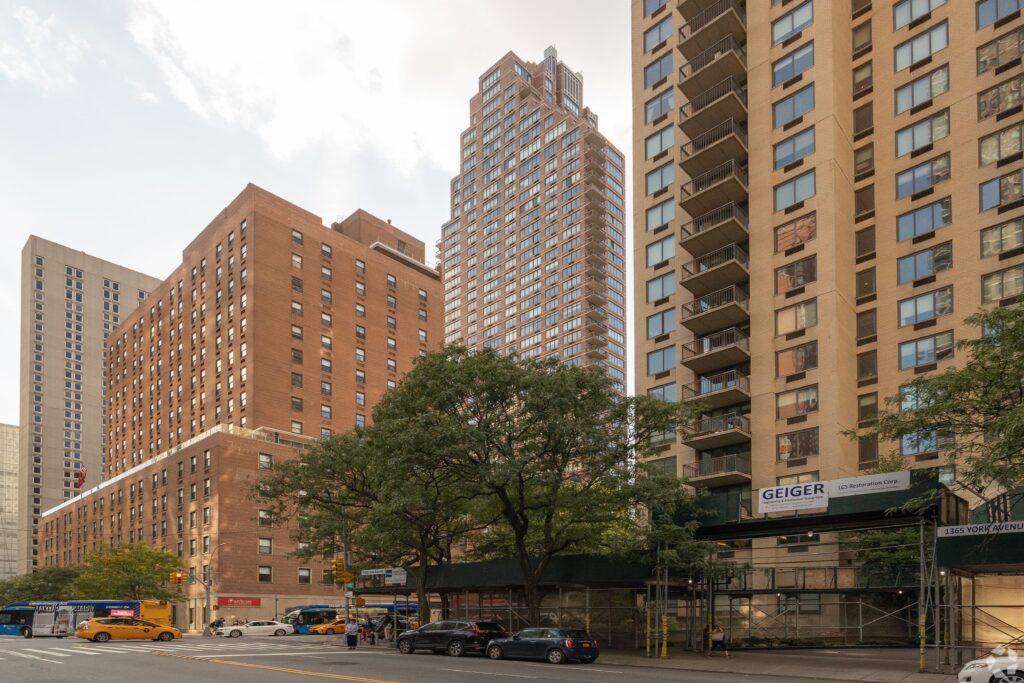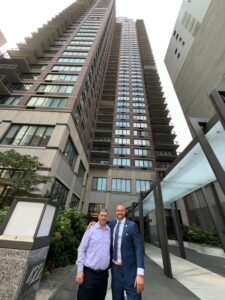
The Oxford is a 44-story condo nestled in the Upper East Side neighborhood of New York City.
The building is maximizing its payouts to reduce energy during demand response events by letting Parity automate and control its HVAC systems.
Demand response events generate financial rewards for buildings when they agree to lower energy use during specific hours, typically during the warmest days of summer, to protect the grid.
Buildings get paid per kW reduction during scheduled or sometimes unscheduled demand response events.
“The resident manager isn’t running around manually turning things on and off on the hottest day of the year, which takes forever,” Joe Cascio, Parity’s service delivery manager, told Habitat Magazine.
That’s because Parity automates demand response protocols to run during demand response events.
We can accomplish this because we remotely control the building’s HVAC systems. That gives us a deep understanding of the building’s real-time heating and cooling demand, enabling us to automate their system with a unique level of precision.
In the same Habitat article, Gerry Grady, the Resident Manager at The Oxford, said “Once a demand response event is called, the systems will automatically revert to the lowest settings or be switched off.”
This automation avoids any delay in lowering energy use and maximizes payouts.
At The Oxford, for example, we automate and control the ventilation units and exhaust fans. Our cutting-edge control optimization software allows fan speeds and temperature settings to be dialed back or turned off for demand response events.
We worked with Gerry to pre-program the level of curtailment he was comfortable with to reduce any impact occupants may face from the temporary reduction in energy usage.

Parity can automatically “switch” the building into demand response mode when the notification of an event is received from the demand response aggregator.
When the notification of an event is received from the demand response aggregator, our automation goes into effect.
Buildings enroll in demand response programs through demand response aggregators. In this case, The Oxford choose to work with our friends at Logical Buildings.
Logical Buildings estimated the reward for The Oxford will be in the region of $10,000. But that payout isn’t the only perk.
On a typical summer afternoon, The Oxford uses ~1,176 kWh of electricity.
Grady told Habitat Magazine that during three demand response events in July, common area energy usage dropped by around 44%, double their target.
By lowering energy use during demand response events, buildings avoid paying the more expensive electricity delivery rate during the specified timeframe.
The Oxford saved almost 2,000 kWh of energy in total, amounting to several hundred additional dollars in savings.
Are you ready to learn more about how automating demand response events can earn your building an additional revenue stream?
We’re hosting a webinar with Logical Buildings to share how working with both of us can help your building slash its energy use and earn revenue from utility programs.
You will hear from James Hannah (Managing Director at Parity), Joe Cascio (Service Delivery Manager at Parity), and David Klatt (COO at Logical Buildings) on the details of why automating demand response is the next thing you should implement in your building.
You can sign up for our upcoming webinar here.
You can also email contact@paritygo.com or call 833-372-7489 to tell us that you’re interested in working with Parity.